When you think of horror filmmakers what names do you think of? John Carpenter, Wes Craven, Jordan Peele, James Wan, and Dario Argento are the typical answers you’ll get. When I think of horror filmmakers the first name that always comes to mind is Larry Fessenden. Without independent horror we wouldn’t have some of the absolutely amazing films we have today, and Larry Fessenden is the personification of grassroots, guerilla style, independent filmmaking. If you look up Larry on Google it will have him listed as an American actor. While that is true, his achievements in the world of horror really lie within his filmmaking and the awe-inspiring oeuvre he has crafted over his 60 years on this earth. In ’86 Larry would create and helm Glass Eye Pix, this is where Larry would have his hand in tons of beloved genre films throughout the next nearly four decades.
On top of writing, directing, editing, and producing groundbreaking films, Larry Fessenden and Glenn McQuaid would go on to create the spectacular audio drama Tales From Beyond The Pale. If you thought Larry stopped at films and audio series, you’d be wrong. Larry and Beneath collaborator Graham Reznick would create Until Dawn. Until Dawn is an interactive fiction horror game, where each decision affects the total outcome of the game. This idea wasn’t new, as critically acclaimed games like Heavy Rain and Beyond: Two Souls had a similar gameplay style. What Fessenden and Reznick did with Until Dawn made interactive fiction games feel fresh, fun, and frightening. Until Dawn would go on to kickstart an entirely new franchise with The Dark Pictures Anthology series as well as a VR spinoff Until Dawn: Rush of Blood, a VR prequel The Inpatient, and a spiritual successor The Quarry.
When it comes to filmmaking a film can only be as good as the story it’s trying to tell. It’s no surprise to say there are tons of genre films, and non-genre, that are vapid vanity projects with little to nothing to offer. What separates Fessenden from an overwhelming majority of filmmakers is how he weaves social commentary through his stories without coming off as heavy-handed or with an air of moral superiority. Every feature film that Fessenden has served as writer/director of has a specific point it is trying to make and that’s what makes them feel so special. We’ll discuss it later, but after watching films like Habit and Wendigo it makes sense that Larry propped up many mumblecore/gore filmmakers. The naturalism of Fessenden’s scripts takes these big ideas he wanted to talk about and brought them down to earth by providing the social commentary through intense character pieces.
Larry Fessenden would start his descent into madness with a handful of short films. Thanks to The Larry Fessenden Collection from Scream Factory and the Glass Eye Pix YouTube channel I was able to watch a few of them. Unfortunately, there are some shorts like The Eliminator, The Field, and a handful of others I wasn’t able to see for this piece. But I think the best place to start examining his career would be to look through his short films. (Side note, I’ll be covering features that were both written and directed by Fessenden.)
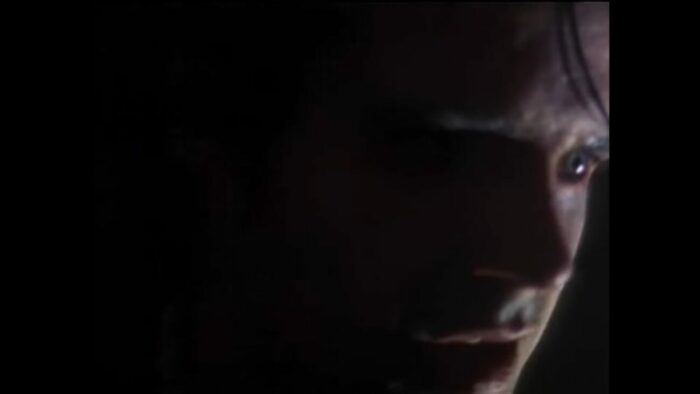
The Short Films of Larry Fessenden
In 1980 Larry would write and direct White Trash a short about a man who kills another, and then, while downing a glass of whiskey (or scotch), meticulously hacks apart the body with a cleaver. Stylistically frantic and visually engaging, White Trash set the tone for Fessenden as a director and as a creative. Most of the frames are either askew or slightly off-center, lending a frantic and haphazard feeling to the story. It almost feels as if White Trash was a visual inspiration for Kyle Edward Ball’s Skinamarink.
A few years later Larry would write and direct Habit, a short film that he would later go on to give the full feature treatment. Habit (short) is nearly similar to the feature with more of a chaotic energy to it; that’s not to say the feature isn’t chaotic, but we’ll get there later. Habit is a sensory assault of beauty, taking the viewer on a wild ride through mid ’80’s New York. While the bones of Habit are put front and center, the feature version really expands upon these ideas and takes the social commentary to new levels.
In 2014 Larry would make two shorts, one a music video and one for the anthology film The ABCs of Death 2, both surrounding an idea he would later go on to expound upon: Frankenstein[‘s monster]. The music video Frankenstein Cannot Be Stopped, for the band Life In A Blender, follows a group of theatergoers watching a recreation of the film Frankenstein. The mask used in the movie would be the same mask Larry would use in N is for Nexus in ABCs 2. The music video is fun and it’s cool to see Larry’s take on the original story of Frankenstein, but N is for Nexus might be one of my favorites of his.
Like Frank Henenlotter and Abel Ferrara, Fessenden has a unique place in New York film history. These filmmakers have used New York City as both settings and characters in their respective stories, showing the beauty and ugliness that resides in the Big Apple. Unlike Henenlotter and Ferrara, Fessenden is unparalleled in his ability to capture the wretched beauty of New York. N is for Nexus really shows just how skilled a creative Larry is. Monster (Michael Vincent) and Bride (Lauren Molina) are set to meet up for a Halloween party, with Monster riding his bike and donning the Frankenstein mask from Frankenstein Cannot Be Stopped. The short tells three stories: Monster riding his bike, Bride waiting for him, and Driver (Aaron Beall), a typical New York taxi driver, with Passenger (Hanna Cheek) criticizing Driver. What I find most impressive about this short is how Fessenden visually captures the frantic energy of New York through shots and editing alone. When watching the short you know what’s going to happen, based on the energy it exudes, and because of Larry’s knowledge of the craft he still finds a way to make the story engaging and entertaining.
The final short film I think it’s necessary to talk about is his segment in Nathan Crooker’s Isolation. One of the first films to come out about the COVID pandemic during the pandemic, Isolation was a no filtered examination of all things pandemic related. Crooker didn’t stop any of the filmmakers from telling the story they wanted to tell. If you could have guessed it my favorite segment was the first segment Fever. Fever follows Man (Larry Fessenden), Wife (Beck Underwood), and Son (Jack Fessenden) as they try to escape virus-ridden New York City and quarantine in the woods in upstate New York. What’s impressive about Fever is how Larry brings so much emotion and agony to this story, making it hauntingly beautiful and sad. Fessenden over-delivers with Fever and in turn it set an incredibly high bar for the rest of the filmmakers in the anthology.
No Telling (or the Frankenstein Complex)
It should be noted this film is listed as No Telling, but on the poster art in The Larry Fessenden Collection shows the title in the subtext as No Telling (or the Frankenstein Complex) and I almost wish he would have gone with this title. I’ll come back to that point later. At its soul, No Telling is an eco-horror film that pits natural organic science versus what we would consider today to be “big pharma” science. A small town is facing hardships as they are being conned into using pesticides by a large company, that is only in it for the money. Realizing the livestock in town is dying due to the pesticides invading their water supply, environmentalist Alex Vine (David Van Tieghem) tries getting the town to realize there are ways they can get their crops to flourish naturally. Unfortunately for Alex, the pesticide providers don’t show any signs of stopping their encroachment on the town. That’s when scientist Geoffrey Gaines (Stephen Ramsey) and his wife Lillian Gaines (Miriam Healy-Louie) move to a farmhouse in the area. Geoffrey hopes to use the isolation of this farming community to work on his “noble” scientific efforts, and where Lillian finds out just how truly repugnant of a person Geoffrey is.
So why do I think the full title of this film works better than the shortened one? When we look at Victor Frankenstein we have to look at his reasons for doing what he did. Did Victor really think what he was doing was good for humanity? I’m sure he did at one point, but the degree to which his experiments ethically flatlined is where the true importance of his character would shine. Like Victor Frankenstein, Geoffrey seemingly started with good intentions. Being unable to achieve the results he wanted, Geoffrey had his eye on the wrong prize. Rather than remembering the importance of what he was working on or why he started it in the first place, his intentions would falter ethically, as he wanted what Victor Frankenstein wanted: fame, recognition, to be in the history books. And like Victor Frankenstein, Geoffrey would not even humor the idea of how his actions affected the many lives of those around him. No Telling tells this story by examining the relationship between Lillian and her husband, Lillian and Alex, and Lillian and the townsfolk she interacts with.
No Telling also comments heavily on animal lab testing and the cruelty behind it. The horror of this film comes in two ways the first being the unethical and immoral practices of Geoffrey and the company behind him, but for me, and the majority of film viewers, the true horror lies within the transgressively frightening animal scenes. It would be understandable how some of these animal scenes could be a turn-off, they’re difficult to watch. From the brash and unsubtle scenes like the lab rats pinned to boards with their spines showing and that final scene to the more reserved scenes like Geoffrey trying to lead a calf through a field, nothing about this film seems safe, and that’s why it’s such an impactful film. Larry shows the ugly side of what most people have been blind to for the majority of their lives. This film will piss a lot of people off, and that’s the point.
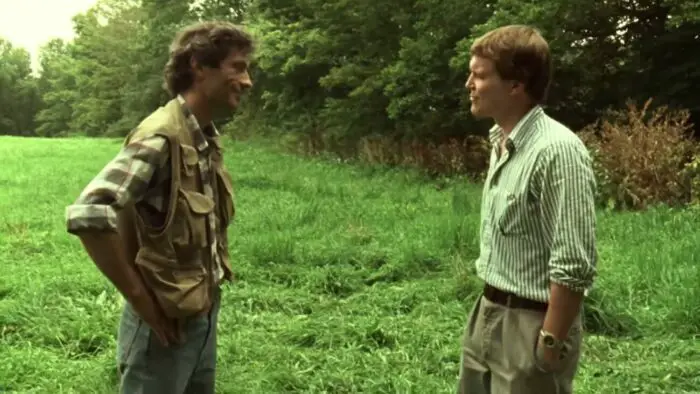
Habit
I wanted to save my favorite for last, before realizing chronological coverage would make more sense. I’ll just say up front that Habit might be my favorite vampire movie. Habit is a cautionary tale that’s really about the human condition, alcoholism, self-love, and self-destruction. The film follows Sam (Larry Fessenden) as he navigates life after a recent breakup and a seemingly failing struggle with alcoholism. After meeting Anna (Meredith Snaider) at a party, Sam’s life turns for the worst as he loses all sense of control.
While mumblecore/gore is credited as coming to life in the early aughts, I really think Habit might be the first true mumblegore film. As with all of Larry’s films, Habit is truly a character study of Sam. Habit hits all the checkmarks of a mumblecore film: naturalistic dialogue, low budget, focusing on the relationships between young adults, and a heavy emphasis on dialogue. Some people say mumblecore has an emphasis on dialogue over plot, but that sounds a bit demeaning to me. To say that something focuses on dialogue over plot sounds like the story completely negates the plot, and that’s far from true for the overwhelming majority of mumblecore. The plot is their relationship, and for the popcorn audience that means putting effort into the analysis of what they are watching. As I’ve said time and time again there is nothing wrong with a popcorn flick. There’s also nothing wrong with the filmmaker asking us to put time and effort into taking these concepts and forming our own thoughts and emotions from what they are trying to tell us. Larry doesn’t spoonfeed us the themes of Habit, rather he perfectly lays out the map of what he is trying to tell us and lets us form our own ideas.
What makes Habit such an interesting watch is if you want to examine the themes you’ll come out of the film feeling one way, if you take the film at face value then you’ll come out of the film feeling another way. We get the usual lore of a vampire flick like Anna asking to be invited into Sam’s apartment, being turned off by the smell of garlic, not showing up in mirrors, never eating human food, never being out during daylight hours, and insatiable lust. The beauty of Habit oozes throughout the nearly two-hour runtime and is truly a spectacle to behold. Both Fessenden and Snaider give top-notch performances and truly steal the show. On top of all of this, as stated earlier, the finesse Larry has with how he captures New York City is unrivaled by any. The cinematography feels more reserved than No Telling, and that’s what makes this film feel more grounded and impressive.
When it comes to sex scenes in film more often than not they feel forced or included for provocativity’s sake. The sex scenes in Habit are some of the most realistic and beautiful in film. There’s an awkward sensuality to how Fessenden captures the relationship between Sam and Anna. It feels real. It helps sell the story we’re being told without forfeiting the trust Fessenden has built with the audience.

Wendigo
Along with Frankenstein, the Wendigo is another character that would span through Fessenden’s career with it making another appearance in Until Dawn. Wendigo is a film about Kim (Patricia Clarkson), George (Jake Weber), and their son Miles (Erik Per Sullivan) as they head to upstate New York for a little getaway. After a run-in with some local yokels Miles’s adolescent imagination soon takes full control over him. The family goes to town one day where Miles is introduced to the idea of the Wendigo, and as misfortune starts to befall the family Miles starts believing it’s all because of the Wendigo.
Wendigo examines the idea of pain and anger through the eyes of a child, and everything that comes with it. After seeing the awful confrontation between his parents and the hicks that live in this town, Miles realizes there are people out in the world who have anger and evil in their hearts. A story like this could go so many different directions, and I think the direction Fessenden took with this story works very well. It’s a creature feature that isn’t about the literal creature, rather it’s about the metaphorical creature that resides deep in anger. Instead of the visual horrors of his first two films, Wendigo is an exercise in patience, and if you exercise that then you will be rewarded with a nihilistically cathartic conclusion. This is definitely Fessenden’s slowest film, but that doesn’t mean it’s not good.
What I like most about this film is the relationships between the characters. Kim makes it clear to George that he’s unknowingly pulling away from his child and how it’s affecting both of them. We can see when George pays attention to Miles, Miles is a completely different kid. As their relationship strains and eventually builds back up we get hit with the payoff for all of the build-up. And it’s truly heartbreaking. Wendigo was my only blindspot in Fessenden’s credits before writing this piece, and I’m pretty bummed this is the first time seeing it. It’s truly atmospheric and existential horror at its finest.

The Last Winter
Fessenden’s fourth feature, The Last Winter, is less subtle with its commentary, but that’s the point of it. There’s no question or misinterpretation here, this film is about global warming. And it’s, arguably, his biggest film. Larry has described this film as “an ode to a civilization we have squandered.” I feel like horror has always been the best genre for social commentary because its use of horrific images and sequences really do an excellent job of getting a point across. And with a topic like global warming, something that is irreversible at this point, showing us what could happen as a result of our follies is terrifying. Whether we inevitably have a 2012 scenario, an In the Earth scenario, or a The Last Winter scenario does it really matter? We’re screwed no matter what. Fessenden was able to capitalize on this idea by putting a group of oil scouts into a truly terrifying scenario.
There’s a lot I, and others, could say about this film and I’ve been wondering how to describe the feelings I have for it. At the end of the day what is important to know about this film is this: The Last Winter is a protest film, and Larry Fessenden is a protest filmmaker. Full stop.
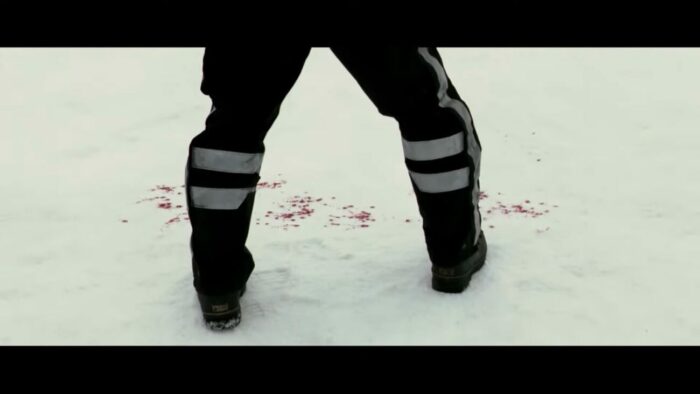
Depraved
A lot of the points I want to make about Depraved are similar to the points brought up for No Telling. Depraved is a Frankenstein’s monster film, so I could easily replace the name Geoffrey with Henry (David Call) and Polidori (Joshua Leonard) and feel sufficient with my analysis. Where Depraved finds itself different from No Telling is about the inclusion of PTSD and the effects war has on soldiers. Depraved follows Henry, under the orders of Polidori, who suffers from PTSD, as he tries to bring life back into a deceased stiched-together person in the hopes of making millions off of a drug Polidori is shilling.
The more I think about it, the more this feels like a reimagining of No Telling. Rather than Henry going out and getting the subjects himself, as Geoffrey does, Henry’s subjects are unethically obtained by Polidori. Henry does these experiments as a sort of back alley clinical trial for Polidori, with the hopes of making millions off of a “miracle drug”. Like No Telling, Depraved is a hellish rebuke of big pharma, while also expanding upon that to include the horrors of war and the lack of assistance veterans receive.
Henry and Polidori might lead the film, but the show is stolen by Adam (Alex Breaux). Breaux’s physicality after his reanimation shows not only his skills as an actor but Fessenden’s skill as a director. If I had to pick the best written, acted, and directed character of any Fessenden film it would be a tie between Sam (Habit) or Adam. Depraved follows more along the original story of Frankenstein than No Telling does, but Fessenden still finds a way to make the story and ideas feel fresh and original. Also, this film marks the feature return of Fessenden filming in New York. Something about the idea of taking the character of Frankenstein and putting him in Brooklyn feels like it shouldn’t work…but it works all too well. This just proves that Larry Fessenden is a force to be reckoned with.
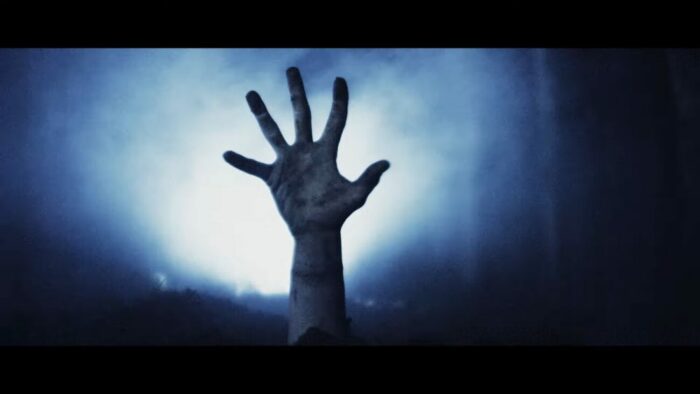
Final Thoughts
Well, that was a lot. Thanks for sticking through to the end. I think the point I’ve been trying to make this whole time is how there are only a handful of filmmakers I admire as much as Larry Fessenden. Whether it’s writing, directing, editing, or producing, there are few filmmakers like him. His films are accessible and poignant, while never seeming as if he’s looking down at anyone. I had a conversation with Larry last week and he couldn’t be kinder or more down to Earth. A man of this magnitude could easily be full of himself, but he’s not. Larry Fessenden has used his voice for the good of the people, and he has inspired a plethora of filmmakers who have done/will do the same. I can confidently say our genre would not be what it is today without him. He is a genre tour de force, a walking masterclass, and a true inspiration.


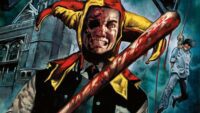


Loved review!!